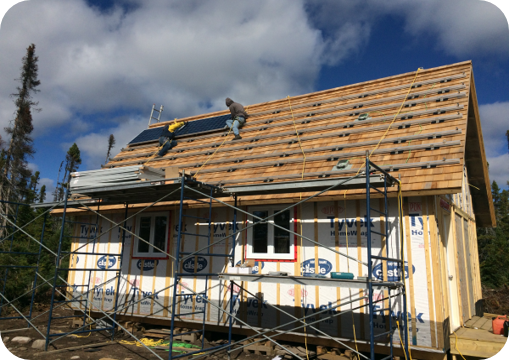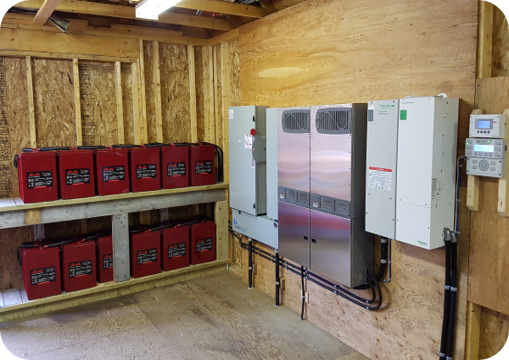ENERGY YEAR-ROUND
Solar panels represent an ideal energy solution if you are a homeowner with an interest in energy self-reliance.
However, several factors need to be taken into account to ensure a timely return on investment. In some cases, where electricity is expensive, the ability to resell the power you generate make this a sound investment. Conversely, if electricity is cheap, a solar installation is less profitable.
On the other hand, if your residence if off-grid, acquiring a renewable energy system is more profitable than building a link to the power grid. The battery system may be designed in order to guarantee a certain number of days of full autonomy in case of low sunshine for several days in a row.
Wherever you are, whatever your needs, your panel’s life span will depend on the local climate.
INSTALLING SOLAR PANELS
1-Roofing
Solar panel rail mounts are first installed, with great care being taken to keep the roof waterproof. Then solar panels are attached. Cabling runs below them and then through the roof to the electrical chamber.
2-Converters and batteries
Panels are tied to a renewable energy system in the electrical chamber. This requires some knowledge in DC electrical cuircuits and connection. The assistance of an electrician is recommended for all AC connections.


How solar panels work
Two kinds of installations
Grid-tied
These users generate electricity on their roof or backyard, while the sun shines and sell back what they didn’t consume to the local power company, or they store it in batteries.
1-Solar panels generate electricity during the day. This power is sent to electrical converters.
2-The converter (an inverter to be specific) transforms the panels’ direct current (DC) into alternating current (AC) and distributes it locally.
3-Part of this power goes to the distribution panel and power the home’s appliances.
4-Power not locally consumed is injected into the power grid to be sold.
Off-grid areas
These users generate electricity during the day store it in batteries to use it during the night. They are not tied to any power distribution grid. They may be cottages, outfiters or isolated communities.
1-Solar panels generate electricity, which is then sent to a converter (charge controller) to charge a battery bank.
2-The charge controller regulates the battery charge voltage (typically 48 VDC) and keeps it within required values.
3-Another converter (an inverter) draws the batteries’ direct current and turns it into alternating current, fed into the distribution panels from which home appliances are powered.
Click to play
Click to play
Our team is here for you
Whether you wish to install your system yourself or prefer to deal with experienced installers, we are here to answer your needs. Visit our online store or try our online app to start designing your system. It will be our pleasure to support you prior to, during and after installation.
The Idénergie team




